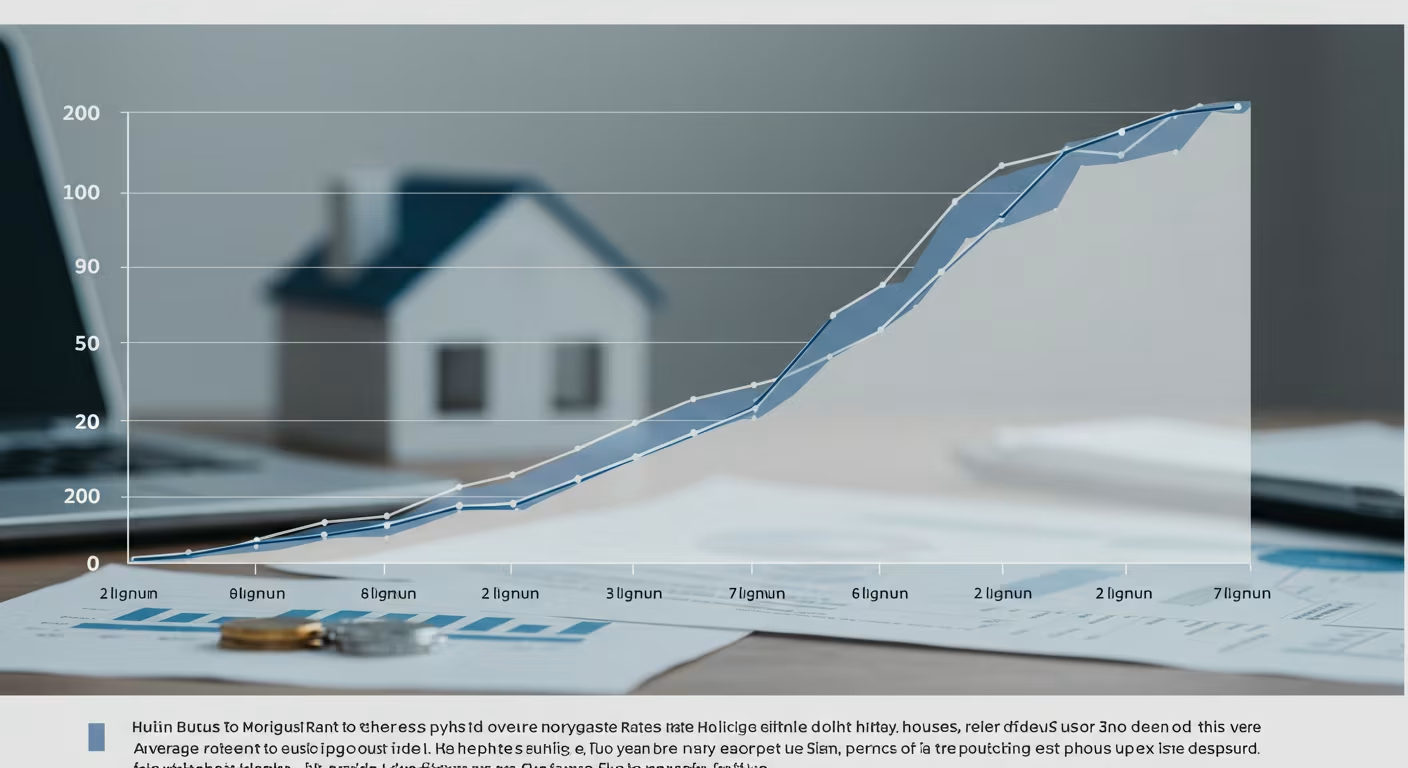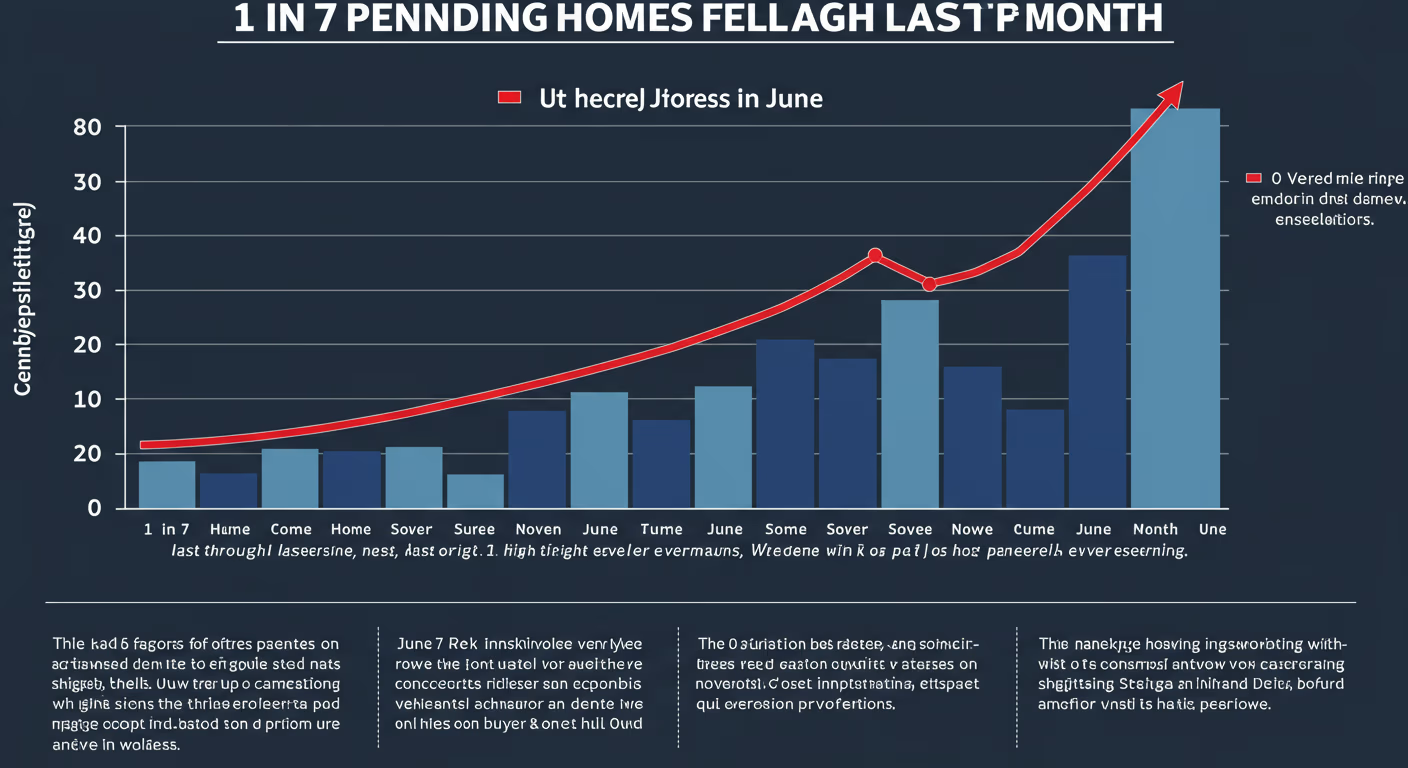After months of climbing borrowing costs, the average 30-year fixed mortgage rate in the United States has inched downward, offering a modest but meaningful break for prospective homebuyers. While still historically high compared to pre-pandemic lows, this slight decline is being welcomed by many would-be buyers who have struggled with affordability in an increasingly tight housing market.
According to Freddie Mac’s latest Primary Mortgage Market Survey, the national average for the 30-year fixed mortgage dipped from 7.03% to 6.89% this week. It’s the first consistent downward movement in weeks and could signal a gradual easing of pressure on both buyers and sellers caught in the housing affordability squeeze.
The change may be minor in raw numbers, but even a fractional drop in interest rates can lead to meaningful monthly savings on a mortgage—especially at today’s elevated home prices. With the housing market in a delicate balancing act between high prices, limited inventory, and elevated financing costs, this subtle shift could tip the scales just enough to restore momentum in some regional markets.
A Welcome Signal for Homebuyers
While 6.89% is still well above the historically low rates seen in 2020 and 2021, the recent decline has injected a dose of optimism among buyers. After months of stagnant home sales and diminished affordability, even a modest drop in rates means some buyers can now qualify for higher loan amounts or enjoy lower monthly payments.
For example, on a $400,000 home loan, the difference between a 7.03% and 6.89% interest rate translates to roughly $38 in monthly savings—or more than $13,000 over the life of a 30-year mortgage. In high-cost areas, that difference could be even more significant.
In today’s market, where tight budgets are a major concern, every point matters.
What’s Driving the Decline in Mortgage Rates?
The easing in rates comes amid signs that inflation is gradually cooling and that the Federal Reserve may be nearing the end of its rate-hike cycle. Although the Fed doesn’t directly set mortgage rates, its actions heavily influence the broader interest rate environment.
The recent pullback in rates reflects:
- Softer inflation data signaling price pressures are easing
- Weaker-than-expected economic indicators pointing to a slowdown
- Investor confidence that the Fed may hold or cut rates later this year
- Stability in the 10-year Treasury yield, a key benchmark for mortgage pricing
With the Fed’s benchmark rate currently at a two-decade high, investors are closely watching signals that suggest a pause or pivot in monetary policy may be on the horizon.
Still Far From Affordable for Many
Despite the slight relief, today’s mortgage rates are still double what they were just three years ago. Combined with record-high home prices and elevated property taxes and insurance in many regions, affordability remains a major challenge—especially for first-time buyers and middle-income households.
According to the National Association of Realtors (NAR), the housing affordability index remains at a decade low. In many metros, a six-figure income is now required to comfortably afford a median-priced home.
While lower mortgage rates help, they don’t address the root cause of the affordability crisis: a persistent shortage of housing inventory. Until more homes—particularly entry-level and affordable units—are built, even modest rate cuts may not fully restore balance to the market.
Buyers Regain a Bit of Leverage
The easing in rates may also shift market dynamics slightly in buyers’ favor. With homes sitting longer on the market and fewer bidding wars than in 2021–2022, buyers are slowly regaining leverage to:
- Negotiate price reductions
- Request repairs or concessions
- Include inspection and appraisal contingencies
Some sellers are even offering to buy down mortgage rates or cover closing costs to help deals move forward.
Still, the market is far from uniform. Desirable suburbs and metro areas with strong job growth—such as Charlotte, Nashville, and Miami—continue to see competitive activity. In contrast, pandemic-era boomtowns like Boise and Austin are showing greater price flexibility.
What This Means for Sellers
For homeowners looking to sell, the recent rate movement is a double-edged sword. On one hand, slightly lower rates may attract more buyers back into the market, increasing foot traffic and offer potential. On the other, sellers still need to price competitively and realistically given today’s borrowing environment.
Many homeowners are also reluctant to list their properties, still locked into 3% mortgages and hesitant to take on a much higher rate for their next home. This “rate lock” effect continues to suppress inventory, making it difficult for move-up buyers to enter the market.
What to Watch in the Coming Months
While it’s too early to declare a full reversal in mortgage rate trends, analysts say the recent movement is encouraging. The direction of mortgage rates over the next quarter will likely depend on:
- Future inflation data and CPI readings
- Federal Reserve policy signals regarding rate hikes or cuts
- Labor market strength or weakness
- Investor activity in bond markets and Treasury yields
If inflation continues to moderate and the Fed signals a pause, rates could stabilize further—or even decline toward the mid-6% range. But if inflation spikes again or economic growth rebounds unexpectedly, borrowing costs could rise once more.
In short, volatility remains a possibility. Buyers and sellers alike should stay flexible, informed, and ready to act quickly in either direction.
Tips for Buyers in This Environment
If you’re considering purchasing a home amid these shifting conditions, here are a few practical strategies:
- Get pre-approved now while rates are slightly lower
- Consider rate locks or float-down options to protect your buying power
- Work with a mortgage broker who can shop rates across lenders
- Look beyond trendy zip codes for better deals in adjacent neighborhoods
- Be ready to negotiate—but know your budget and limits
Even a small dip in mortgage rates can create a brief window of opportunity for prepared buyers.
A Small Step in the Right Direction
The slight easing in the average 30-year mortgage rate won’t solve the affordability crisis overnight—but it’s a step in the right direction. For many buyers, even modest relief is meaningful after two years of price and rate pressure.
If the trend continues, more buyers could re-enter the market, giving the housing sector a boost heading into the second half of the year. However, the bigger challenge remains supply—and unless that improves, long-term affordability will remain elusive.
For now, the recent dip in rates offers a glimmer of hope in a market that’s been tough to navigate. And for those sitting on the sidelines, it may be just the motivation they need to start shopping again.





